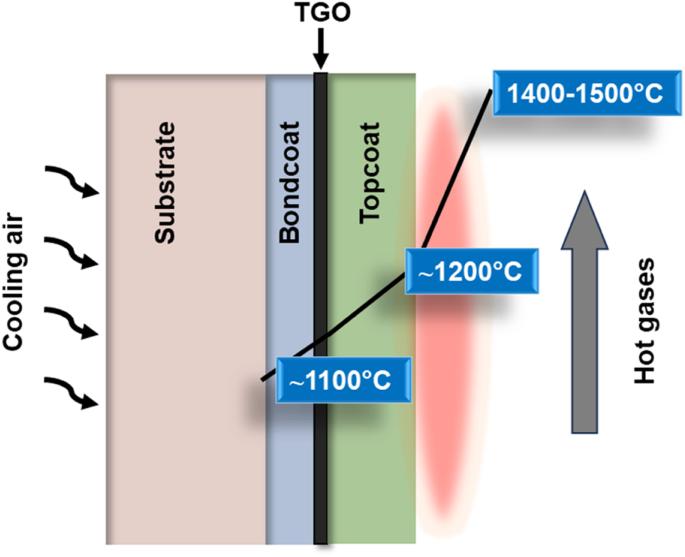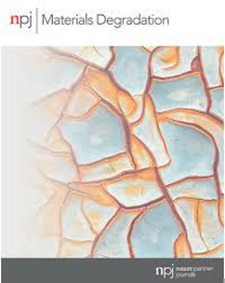热喷涂隔热涂层上的钙镁铝硅酸盐(CMAS)腐蚀侵蚀:综合评述
IF 7.6
2区 材料科学
Q1 MATERIALS SCIENCE, MULTIDISCIPLINARY
引用次数: 0
摘要
硅酸钙镁铝(CMAS)是航空发动机在高温下产生的一种熔融硅质残渣。CMAS 附着在隔热涂层 (TBC) 表面,有可能对发动机部件造成重大损害,导致 TBC 故障。航空业早已认识到 CMAS 对飞机发动机的巨大威胁,这种威胁至今依然存在。目前已开展了大量研究,主要侧重于从根本上了解使用空气等离子喷涂(APS)和电子束物理气相沉积(EB-PVD)技术制造的传统 TBC 在受到 CMAS 攻击后的降解机制。透彻了解 CMAS 的形成原因、其在导致严重溅射中的作用以及如何防止其发生,是学术界和工业界都非常关注的问题。这篇综述文章详细分析了 CMAS 的化学性质以及 TBC 在整个航空发动机使用寿命期间可能遇到的降解机制。本文还结合案例研究,探讨了 CMAS 侵蚀对陶瓷面漆化学和结构改性的影响。文章还讨论了当前旨在减轻 CMAS 侵蚀的策略以及增强减轻效果的前景。本文章由计算机程序翻译,如有差异,请以英文原文为准。

Calcia magnesia alumino silicate (CMAS) corrosion attack on thermally sprayed thermal barrier coatings: a comprehensive review
Calcia-Magnesia-Alumino Silicate (CMAS) is a form of molten siliceous residue generated at elevated temperatures within aeroengines. CMAS adheres to the surface of thermal barrier coatings (TBCs) and has the potential to cause significant damage to engine components, resulting in TBC failures. The aviation industry has long recognized CMAS as a substantial threat to aircraft engines, and this threat persists today. A substantial amount of research has been carried out, primarily focusing on gaining a fundamental understanding of the degradation mechanism of traditional TBCs manufactured using air plasma spraying (APS) and electron beam physical vapor deposition (EB-PVD) technologies after CMAS attack. A thorough understanding of why CMAS forms, its role in causing severe spallation, and how to prevent it is of significant concern both academically and industrially. This review article provides a detailed examination of the chemistry of CMAS and the resulting degradation mechanisms that the TBC may encounter throughout the aeroengine service life. This article also explores recent research, incorporating case studies, on the impact of CMAS attack on the resulting chemical and structural modifications of the ceramic topcoats. Current strategies designed to mitigate CMAS infiltration and perspectives for enhanced mitigation are discussed.
求助全文
通过发布文献求助,成功后即可免费获取论文全文。
去求助
来源期刊

npj Materials Degradation
MATERIALS SCIENCE, MULTIDISCIPLINARY-
CiteScore
7.80
自引率
7.80%
发文量
86
审稿时长
6 weeks
期刊介绍:
npj Materials Degradation considers basic and applied research that explores all aspects of the degradation of metallic and non-metallic materials. The journal broadly defines ‘materials degradation’ as a reduction in the ability of a material to perform its task in-service as a result of environmental exposure.
The journal covers a broad range of topics including but not limited to:
-Degradation of metals, glasses, minerals, polymers, ceramics, cements and composites in natural and engineered environments, as a result of various stimuli
-Computational and experimental studies of degradation mechanisms and kinetics
-Characterization of degradation by traditional and emerging techniques
-New approaches and technologies for enhancing resistance to degradation
-Inspection and monitoring techniques for materials in-service, such as sensing technologies
 求助内容:
求助内容: 应助结果提醒方式:
应助结果提醒方式:


